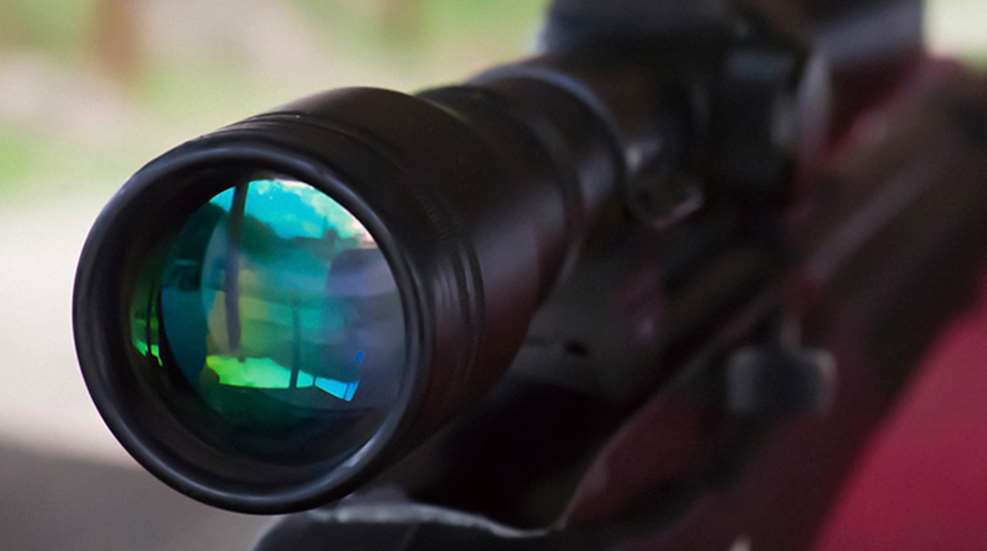
Back when laser rangefinders were a fantasy, the constraint on long-range shooting was the range itself, even if the rifles of the day were not nearly as accurate as today’s. But there remains a limitation not even the world’s most accurate rifles or laser rangefinders can eliminate: wind deflection. Just as range had to be estimated before laser rangefinders, so must we estimate the effects of wind. And no wind estimation method is better than using mirage.
Before we cover mirage, what about simply using a wind measuring device, commonly called an anemometer? Why not just hold it up, measure the wind, and let ‘er fly?
An anemometer only measures wind speed at your location. Critics often point out that the wind speed at your target might be completely different than the wind speed you measure at your shooting position. I find a bigger problem is the shooting location itself compromises your ability to measure the wind. Hunters do not normally skyline themselves when hunting, but rather crouch below the crest of a hill or near a bush. Complicating everything is the bullet path itself: bullets will be flying anywhere from a few to several feet higher than your shooting position when engaging a long range target. Additionally, in order to even see a target at long range you are generally shooting from hill to hill, hill down to a flat, etc. All of these add up to a much higher effective speed than shown using an anemometer. An anemometer is still valuable for a known reading at one point, but it is just that: one reading.
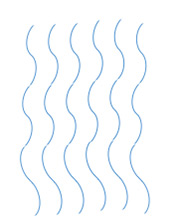
When there is no wind, mirage will rise straight up.
Mirage gives a shooter an indication of the composite effects of the wind without having to worry about the exact direction the wind is blowing. A wind blowing left to right will cause mirage to bend to the right. The stronger the wind, the more the mirage will bend. A no wind condition will cause mirage to boil up. A gentle wind of 2-3 will cause mirage to bend slightly while clearly boiling. A wind of 4-5 mph will show a boiling mirage to the right at about a 45 degree angle. When mirage is at an angle of about 70 degrees with little or no boiling the wind is about 6-8 mph. Once it flattens and becomes “whippy” the wind is 10 mph.
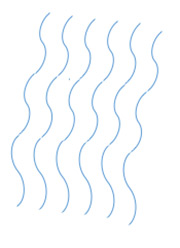
A gentle wind of 1-2 mph from left to right will cause mirage to bend slight the right.
Mirage “washes” out when the wind is 12 mph or higher. When this happens, I will move my spotting scope 45 degrees away from the target and try and determine mirage speed. If I can estimate the wind this way, I know the effective wind speed is 1.4 times this at my target. For example, if mirage is washing out when I look toward my target but appears to be an 8 mph wind when I look 45 degrees away, my estimate of the effective wind speed on my target is 8x1.4 or 11 mph. If you move 60 degrees away from the target to estimate wind, multiple your wind read by 2.
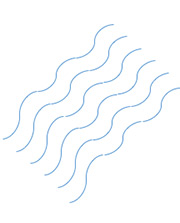
A left to right wind of 4-6 mph will cause mirage to bend to the right at about a 45 degree angle.
Mirage can often be seen through your rifle or spotting scope, but the dryer the air, the more difficult it is to see. In Arizona, where the air is dry, mirage is nearly impossible to see unless you turn your focus down to a point between you and the target. On my Meopta spotting scope I need to turn the focus ring clockwise when looking through the eyepiece. I know if I point my right thumb at the target and curl my fingers toward the palm of my hand I am turning the focus ring correctly. Getting the focus right is important because if you don’t, it will often give you the opposite mirage drift. If you have a scope with a side parallax adjustment knob, you can use this to focus between you and the target to detect mirage, but a good quality spotting scope is a far better tool if conditions are difficult.
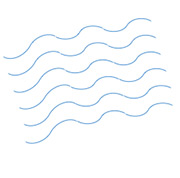
A left to right wind of 8-10 mph will cause the mirage to be almost flat. Once the waves and the angle are both flat, you know the wind is blowing at least 10 mph. Once you cannot see it at all, it is 12 mph or more.
The time of day and the sun intensity will obviously impact one’s ability to read mirage. The easiest condition is the middle of the day in bright sunlight. In this condition, the mirage is generally easy to read. Cloudy days are the most difficult, as is the condition just before sunset. Sunny winter days with snow are the ground often generate lots of mirage. Early morning might seem the same as near sunset, but once the sun starts to rise, you can generally pick up the mirage quickly.
When mirage is difficult to see, try to look for a dark object, like a black rock or a sharp edge; mirage will sometimes show up better. If all else fails, focus on the horizon to get the general wind direction and speed.
Of course, one problem with estimating the wind is that the wind can change before you get off a shot. I use a few tricks to minimize this risk, starting with determining the most common wind condition. The wind won’t be blowing at the same speed all the time. It may lull, then pick up speed, gust fairly hard, and then step down again. I try to shoot only when the prevailing condition is present. After estimating the wind speed most prevalent, I note the angle on a small wind flag. I made this flag using one half of a shooting stick bipod. I clip this on to the elation handle of my spotting scope tripod; since it is shock-corded it fits easily into my pack. I shoot only when the flag is showing the same angle it did when I noted the prevailing wind condition. Before shooting, I also check vegetation near my target through my scope to ensure the prevalent wind is present at the target as well.
Although not as useful as mirage, vegetation can be a good indication of wind speed, especially when I cannot see mirage. I live in Arizona, where most vegetation is fairly leafless, which means it takes a bit of wind to move small branches. Grass is also a good indication. When it comes to picking up the direction of the wind I will check the vegetation on either side of large rocks or other areas shielded by the wind; if these areas are calm when everything else is moving, I know they are sheltered from the wind.
Learning how to read mirage is an important piece of field craft that every shooter should master. Of course, it comes in most handy when shooting varmints such as prairie dogs, where even a small bit of wind deflection will cause a miss. But I recall one mule deer that I shot at 410 yards holding off 2 minutes (8 inches) for the wind—a wind I estimated using mirage.





































